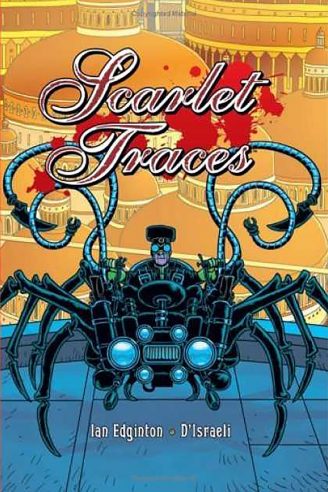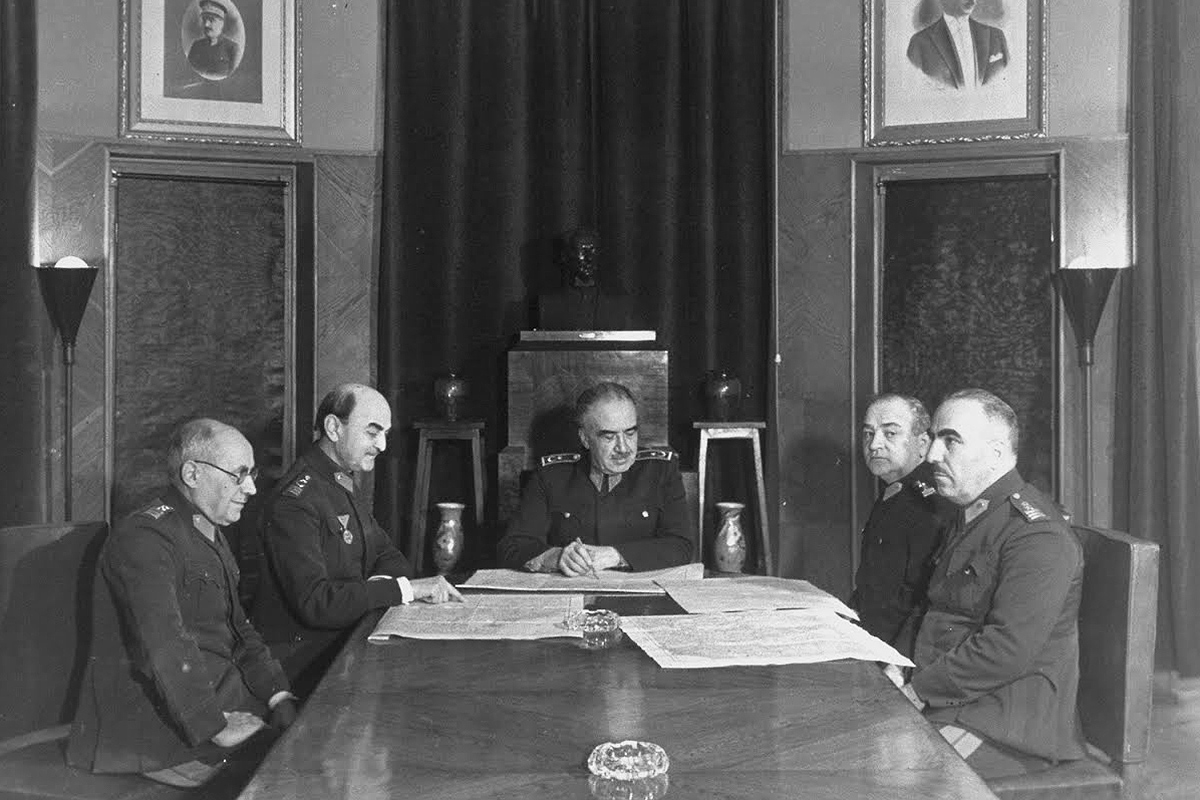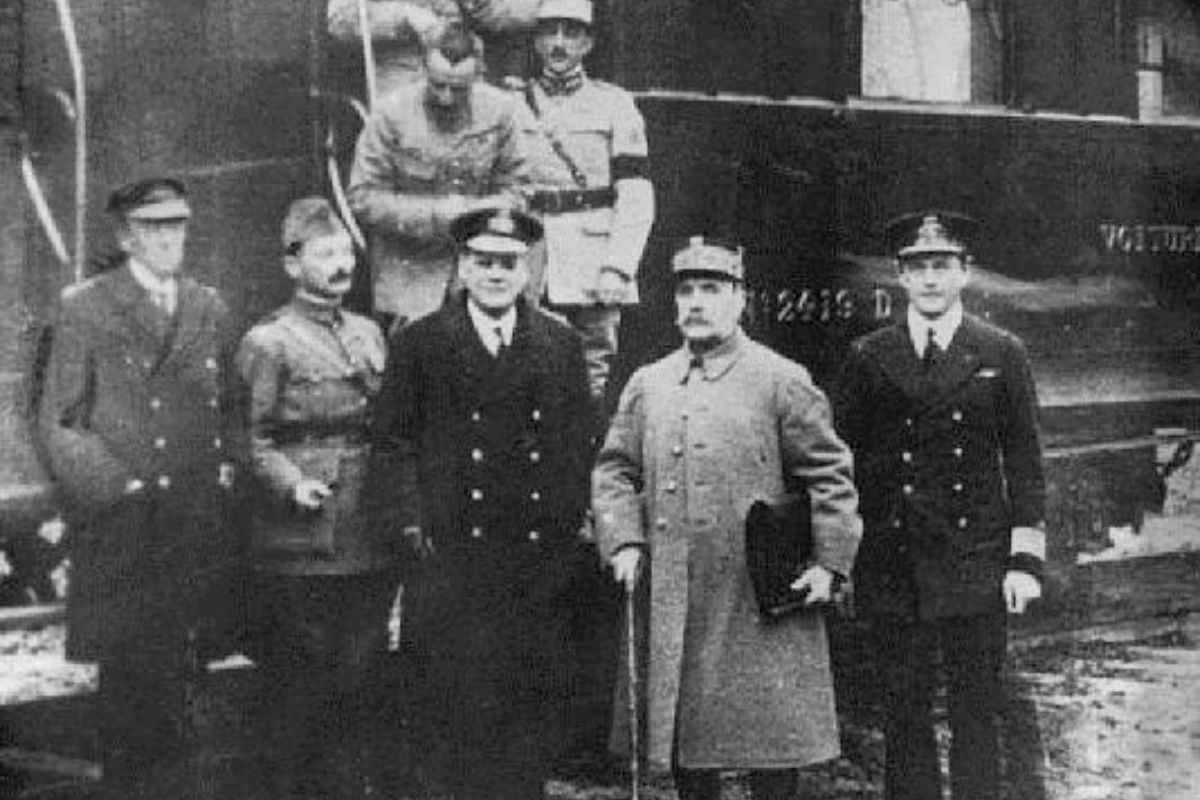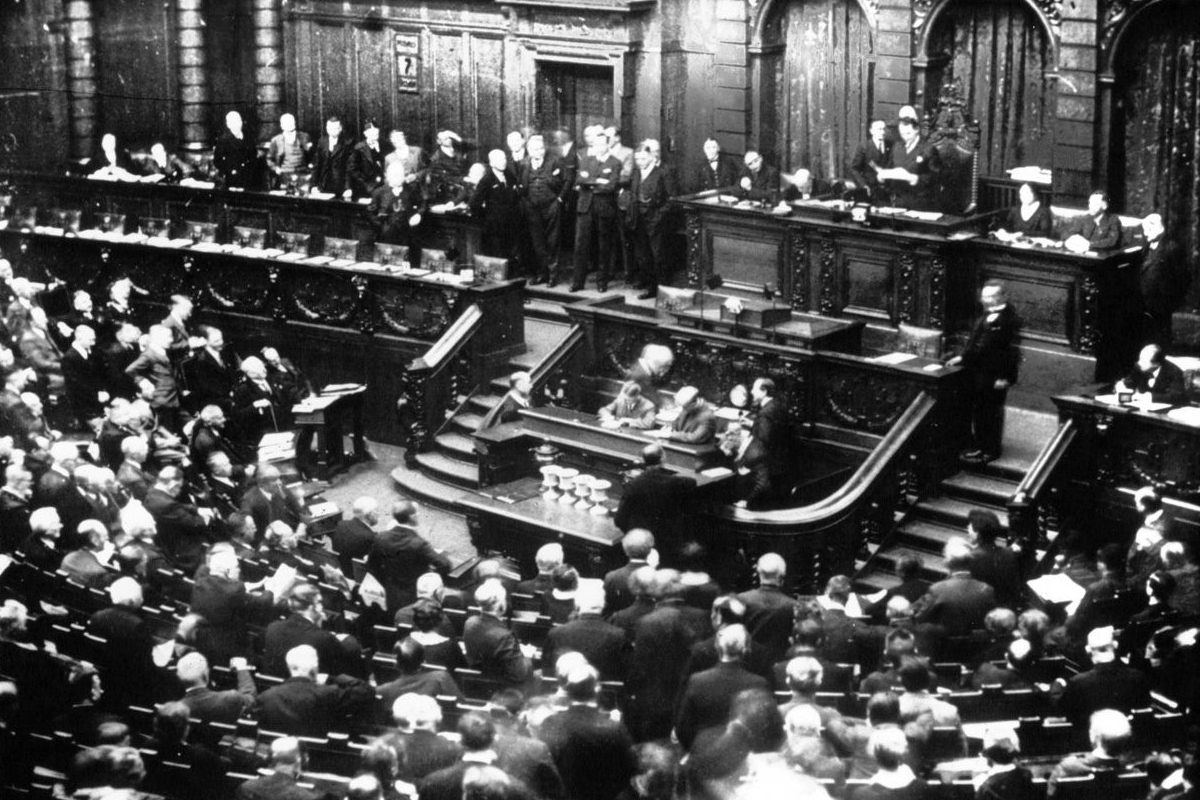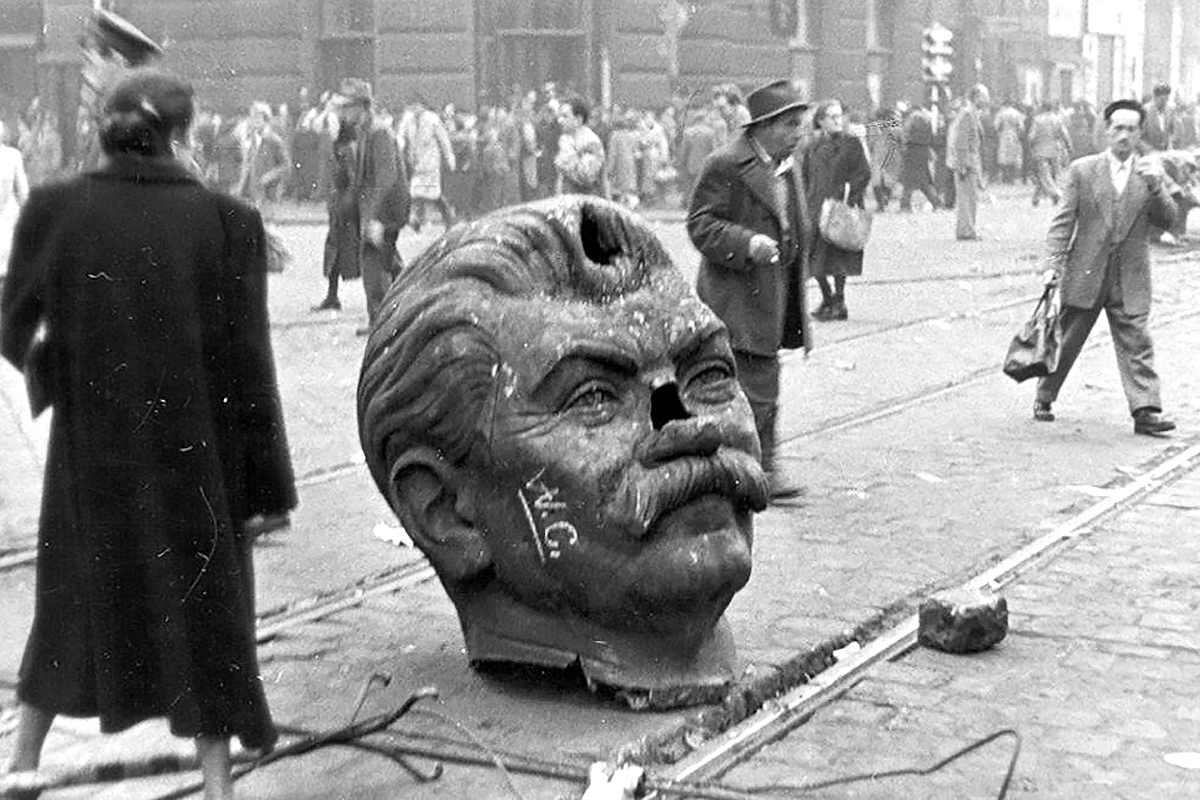H.G. Wells’ War of the Worlds never had a sequel. Thankfully Ian Edington and the artist who calls himself D’Israeli have filled that gap in comic-book form with the formidable Scarlet Traces.
Their premise is simple: after the defeat of the Martians, Britain adapts their technologies to make themselves the world’s greatest superpower. The factories of the North are replaced with mechanical estates, the cavalry trade their horses for multi-limbed fighting machines, and homes are warmed by a spinoff of the Heat Ray. All is well in 1908 — or is it?
The story begins with the discovery of dozens of corpses drained of their vital fluids and leads us further and further into a hideous conspiracy nestling at the heart of the British establishment.
Our heroes are Major Robert Autumn (DSO), now retired, and his Scots manservant, Sergeant Currie, a man who once reduced “a hulking Cossack to tears with nothing but a hearty laugh and a pair of manicure scissors.”
Drawn into an investigation after Currie’s niece goes missing, we travel with them through the insurgency in Scotland, discover the true state of the North, dodge bombs and find the mystery unraveled in a secret facility hidden in the English countryside.
The art is lovely. D’Israeli’s work is clean and the colors vivid without being overly bright. Combined, this makes for a cartoon style that works perfectly, though it might not suit everyone’s tastes.
Perhaps the most interesting aspect for steampunk enthusiasts is the various uses found for Martian technology. Small tripods, for instance, use miniature heat rays to keep the streets of London free of vermin and hanson cabs have become multi-limbed spider cabs. It is world complex and elaborate with in nearly every panel a little, intriguing detail that adds to the charm of Scarlet Traces. The story is powerful, the characters well drawn and the ending brutally honest.
Taking place over only four issues, the story whizzes along while giving us all the time we need to see our characters develop and come to understand this odd new world they find themselves living in. Because of its brevity, it lacks the punch of many longer series, but it is never too short, plus its size means that is makes for a series quick to pick up and enjoy in a single sitting.
This story first appeared in Gatehouse Gazette 3 (November 2008), p. 18-19, with the headline “Traces of Wells; Scarlet Traces”.

